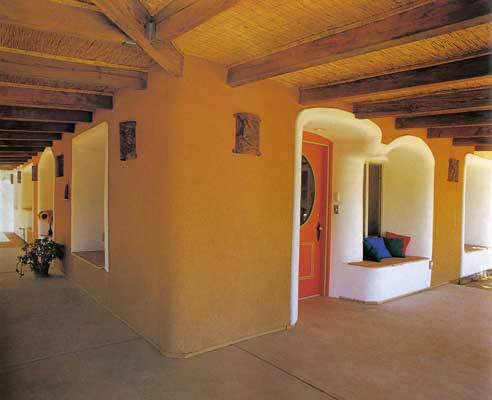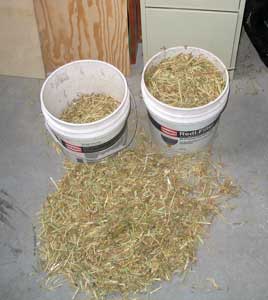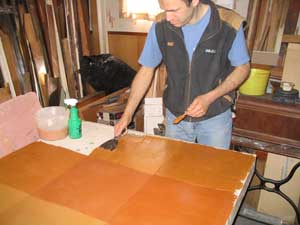
Earthen Floors
An earthen floor is a natural, environmental option that is cheaper and softer than concrete. You can also make it a radiant floor.
From "Alternative Construction Contemporary Building Methods"
ISBN
0-471-24951-3
Made of clay, chopped straw, sand and sealed with linseed oil. It can be waxed. Like a concrete slab, it can function as a radiant heat floor and take advantage of the mass of the materials.
From "Small Strawbale" ISBN 1-58685-515-8















 Build
a frame, fill with straw, burlap it in place and then apply the first
and second coats of clay, straw, sand mix.
Build
a frame, fill with straw, burlap it in place and then apply the first
and second coats of clay, straw, sand mix. A scale will give you consistent results.
A scale will give you consistent results. 




